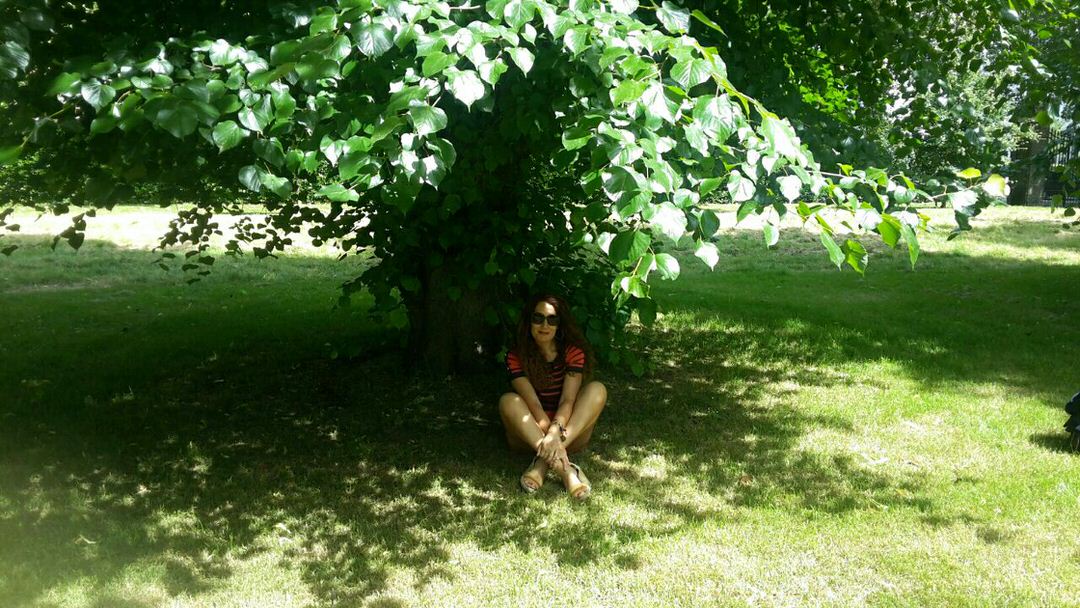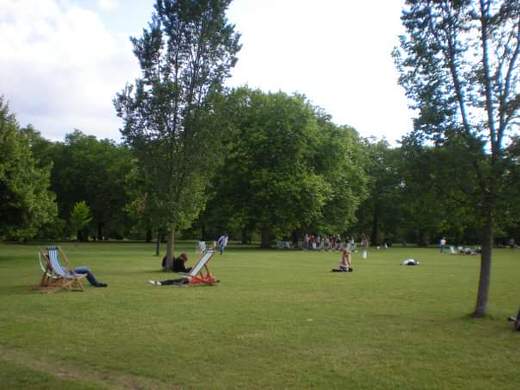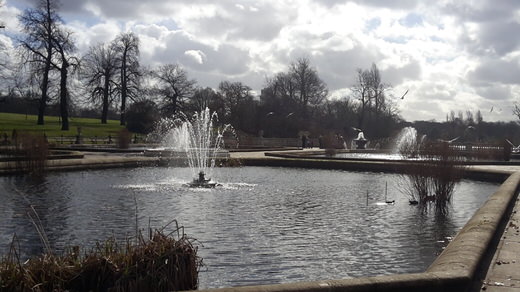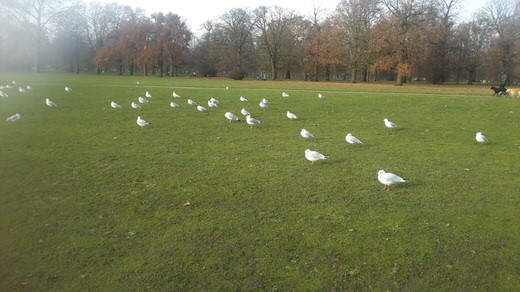For the majority of its visitors and inhabitants, London is the definition of a modern metropolis, with well established traditions and an ongoing evolutionary process that always keeps it in the forefront. Its many controversial aspects coexist in the line of history, completing one another in the most enjoyable way. Elegant townhouses share the same pavements with bohemian open markets, ultra modern skyscrapers stand next to historic churches and busy commercial streets surround palaces and museums. And among all these, a vast green oasis comprising of not just one but seven major parks in the city center and many more smaller squares or widespread parks in the city borders, offer a unique opportunity to enjoy a piece of nature in the heart of the metropolis.

Among all royal parks, Hyde park is the most famous of all, covering an impressive area of 350 acres. It connects elegant Mayfair and posh Knightsbridge with multi-culti Bayswater and hipster Notting Hill.
It also brings together people of all ages, who enjoy a breath of fresh air on a crisp winter walk or a long, lazy lay on the grass on a warm summer afternoon on its grounds. These days, the 16th century hunting grounds of Henry VIII are flooded by Londoners who enjoy their morning jogging, walk theirs dogs, ride theirs bicycles and roll on theirs skates, but also by visitors who enjoy walking around the two lakes, feeding the swans and ducks, following the paths towards the elegant memorial of Princess Diana and the sharp, gothic monument of Prince Albert.
And even though London’s weather is notoriously capricious, you’ll be surprised once you see how many people visit it daily, even during the coldest of months. Winter days find Hyde park waking up covered in a misty veil, a frosty dew and sometimes even snow. Although quieter, its still the preferred choice of those who like outdoor sports.
Apart from running and cycling paths, Hyde park has a tennis centre and football pitches on its southern side, on the grounds where the Great Exhibition of 1851 took place. For the more adventurous ones who seek for a unique experience, horse riding is also available for both adults and children, in the two special arenas of this iconic landmark. With booking in advance, you can enjoy a ride on a horse or a pony from nearby Hyde park Stables, with the escort of a trainer, even if you’ve never ridden before!
If you happen to be in the park early in the morning, you can admire the bravery of the members of the Serpentine Swimming Club – the oldest swimming club in Britain -, who take a dive daily in the waters of Serpentine lake, between 6:00 am and 9:30 am, no matter what the weather is like. As swimming in the lake is only allowed for members of the club, you can always lay back at The Lido Cafe and with a hot cup of tea in hand, watch the swimming races that take place every day, or simply enjoy the stunning views towards the lake and its amphibian inhabitants.
On the opposite bank, the Serpentine Bar & Kitchen offers equally beautiful views of the lake, while enjoying a light meal or a refreshment in order to recharge after a long walk around the lake. Very close to this casual restaurant you’ll find the boat rental service kiosk, where you can rent a pedal boat and glide along the calm waters of the lake. It’s a low-cost, fun experience that offers a different view of the park’s grounds.

If none of these sound appealing to you, or you’re just too lazy for any kind of sport activities, the walk across both the Long Water and the Serpentine is refreshing and allows you to best observe the diverse variety of flora and fauna species of the park. A lot has changed in the park’s layout since the first flowers were planted by the royal landscape architect, Sir William Andrews Nesfield, but the Italian Water Garden on the northern side of the park, near the Lancaster gate, remains magnificent and serene, with its fountains, statues and water lilies. On the south east corner, one of the latest and most charming additions to the park’s layout is the Rose garden. Its unusual design imitates the mouth of a trumpet or horn with seasonal flower beds coming out of it. Various rose species are planned twice a year, with spring and early summer being the best season to fully enjoy the sight and the intoxicating aromas that are spread around the pergola and the two statues featured in the garden: The Boy and Dolphin and that of Diana the Huntress.
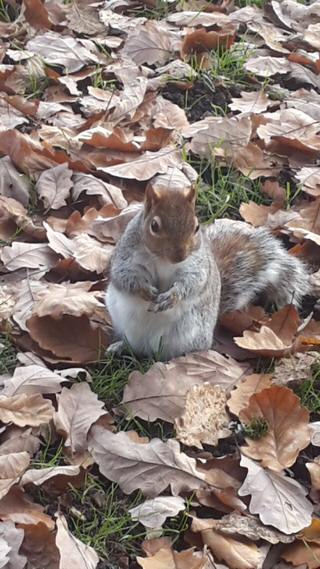
At all seasons and among all these, ducks, grebes,herons and swans fearlessly dive into the cold water of the lakes or lazily dry their feathers in the sun. They are accustomed to having people around, but be very careful with what you feed them. The ones that will certainly steal the show and have you chasing them around, are the cheeky, frisky squirrels that are literally everywhere! One moment we see them climbing up the trees and the next one they’re right next to you, ready to be fed from your palm before they quickly disappear again. So used they are to be fed by the park’s visitors, that they won’t hesitate to climb up your lap to win their lunch. They’re simply adorable!

Looking for more activities or travelling with children? Well, how could there be a park without a playground? Located between the football pitches and the Rose garden, the South Carriage Drive playground promises fun activities and adventurous play for young children up to the age of 12. There are also wooden benches and tables for a picnic or a snack break when the weather permits it.

Speaking of a picnic on the park’s grounds, my favourite -and many others’ – spot is definitely by Princess Diana’s memorial fountain. it’s a serene and tranquil area, with an usual and elegant fountain in its centre, in a design aiming to reflect Diana’s life. It comprises of more than 500 granite pieces that form a circular fountain with water flowing in two directions, swirling and bubbling in some points and eventually calmly tricking at the bottom. It’s a symbolism of Diana’s openness and quality and also a reflection of her life, with its troubled and happy moments. During the warm months, it’s not unlikely to see people sitting at the edge of the fountain and refreshing their feet, or even young children taking off their clothes and splashing in the water.


It really is a lovely space, ideal to lay on the grass and loosen up.
And if you don’t find the grass comfortable enough, there’s always the option of renting a deck chair and kicking back in comfort and style.
It’s a habit very common among Londoners, who rent one of the characteristic striped deck chairs during their lunch break in order to read the newspaper and have a snack away from the city’s hustle and bustle.
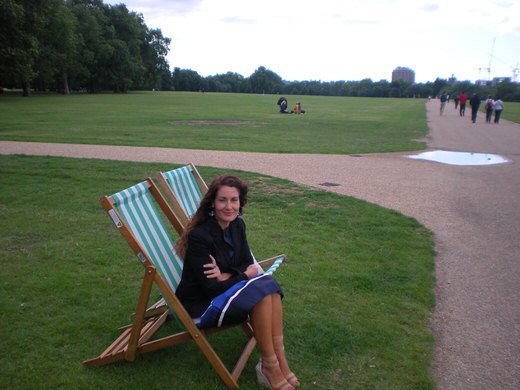

But Diana’s isn’t the only memorial in the park. In fact, Hyde park is full of memorials and statues that commemorate and honour important personalities and moments of British history. Just wander across the park and seek Peter Pan’s lovely statue or that of Achilles, honouring the 1st Duke of Wellington. If you enter the park through the magnificent Apsley Gate with its long line of columns and arches, you’ll soon come across the Animals at war memorial and further south the Cavalry memorial. The rest of them, some in classic and others in modern designs, are yours to explore and discover.
Still, the monument that exceeds them all is the one paying tribute to Prince Albert, Queen Victoria’s husband, whose vision and inspiration for a reformed and educated Victorian London, changed forever the British capital. Albert’s memorial as it’s widely known is actually in the part of Hyde park that belongs to the Kensington gardens and is a mostly elaborate and quite extravagant sharp, gothic tower with the Prince’s gold gilded statue. He’s depicted holding the catalogue of the Great Exhibition, held in Hyde Park in 1851, which he inspired and helped to organise.

He’s surrounded by figures representing manufacture, commerce, agriculture and engineering, aspects that he strongly supported, while the top of the monument is flanked by gilded bronze statues of angels and virtues. Europe, Asia, Africa and America stand at each corner of the memorial, while celebrated painters, poets sculptors, musicians and architects that reflect Albert’s enthusiasm for the arts, form the base of the memorial. If you’re interested in a detailed insight on the Prince’s life and the monument’s history, you can book a ticket for a guided tour that takes place every morning.
And since you’ve entered the area of Kensington Gardens, why not visit the Serpentine Galleries for a good dose of contemporary art. The main gallery which opened in 1970, presents pioneering exhibitions of the most internationally recognized artists and architects of our time. The event though that art lovers anticipate each year is the Pavilion, an installation on the lawn in front of the gallery, set up every summer by an architect commissioned by the Serpentine. Visitor sare welcome to wander around and try to conceive the architect’s vision, in what turns to be a really enjoyable experience. Recently, a former 1805 gunpowder store, located just five minutes’ walk from the Serpentine, has been transformed by Zaha Hadid Architects to a second gallery, the Sackler Gallery, expanding the cultural experience.
From this point, the lovely Round pond and Kensington Palace are only a few minutes walk away. You can finish your day with a visit to the palace or with a the very British ritual of afternoon tea in the elegant environs of the Orangery restaurant, a baroque royal building that stands next to Kensington palace. But even if you conclude your visit to Hyde park right there, you’d have surely enjoyed a day full of recreation, culture, entertainment and fun!
Special events in Hyde park:
- One of the oldest traditions of Hyde park takes place every Sunday at its northeast corner. Speaker’s Corner is an area dedicated to the freedom of speech, where everyone can take a stand and give a public speech on any matter. Public debates and discussions have been taking place there since the mid 1800s and the right for open-air public speaking at this area is even upheld by an act of parliament. Among historic figures that have used Speaker’s corner to demonstrate their views are Karl Marx, Lenin and George Orwell.
- Sunday is also the day that the Bayswater Road Art Exhibition takes place. It’s an open air market where more than 100 artists exhibit their paintings, sketches and drawings across the pavement of Bayswater Road on the railings of the park. It’s a great opportunity to hear the artists talk about their work and – why not – buy an original work of art at a very reasonable price.
- Always keep an eye on the events calendar if you happen to visit London during the summer, as very often top class musicians give concerts in Hyde Park. Queen, The Rolling Stones, Pink Floyd, U2, Elton John, R.E.M. and Madonna are only a few of the renowned artists who have performed live there.
- Finally, Hyde park has its own share in London’s magical atmosphere during Christmas time, as it hosts one of the most spectacular events, The Winter Wonderland. Its a festive themed park with holiday fun for the whole family and activities that include ice skating, a giant wheel, a carousel, ice sculpting workshops, entertainment shows and many dining options. Guaranteed holiday fun for young and older ones!
View the gallery

